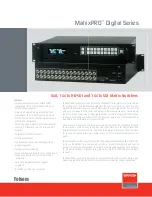
I.L. 29C211E
Effective 04/04
Mechanical Operation
The electrical operator, using solenoids, has a bistable
latching mechanism to switch the circuit breaker ON and
OFF. A manual operation shaft designed for use with a
hexagonal wrench or socket permits the electrical oper-
ator and circuit breaker to be switched locally without
electric power. The bistable latching mechanism con-
sists of dual intermittently rated solenoids, magnets,
armature drive plates, and the bistable latch. The drive
plates slide on bearing surfaces and move the circuit
breaker handle from one position to another. Each sole-
noid consists of an armature, a coil, and a magnet. Both
solenoids operate at the same time and move the drive
plates when the coil is energized. The bistable latch
determines in which direction the solenoid components
and drive plates move.
A molded trigger fits over the circuit breaker handle to
transfer the drive plate force to the circuit breaker han-
dle.
When the circuit breaker handle is in the OFF position
(Figure 1-2), the bistable latch blocks the magnets and
allows the armatures to move when the coils are ener-
gized. When the coils are energized, the armatures are
drawn to the magnets and pull the armature drive plate,
moving the circuit breaker handle to the CLOSED posi-
tion. As the circuit breaker handle moves, it toggles a
cut off switch (handle position/cutoff) to disconnect
power to the external coil switch. The circuit breaker
handle move ment also toggles the bistable latch so that
the latch blocks the armatures the next time the sole-
noids are energized .
When the circuit breaker handle is in the ON or TRIP
position (Figure 1-3), the bistable latch blocks the arma-
tures. When the solenoids are energized, the magnets
are drawn to the armatures and pull the magnet drive
plate, moving the circuit breaker handle to the OFF
(reset) position. As the circuit breaker handle moves,
the cutoff switch disconnects power to the external coil
switch and the bistable latch toggles so that the latch
blocks the magnets the next time the solenoids are
energized.
The manual operation shaft, which k located in the top
lefthand corner of the electrical operator and below the
level of the cover, will accept a 5/1 6-inch (8 mm)
hexagonal wrench or a 1/2-inch (13 mm) socket The
shaft is connected by linkages to the molded trigger
which operates the circuit breaker handle. A sliding door
with a pad lock bracket can be moved over the manual
operation shaft to prevent electrical and manual opera-
tion of the electrical operator. The padlock bracket will
accept one padlock shackle up to 1/4 inch (6 mm) h
diameter.
The circuit breaker status is shown through a centrally
located window in the electrical operator cover:
CLOSED (1) Red, TRIP (+), or OPEN (O) Green.
Electrical Operation
The electrical operator includes the dual-solenoid, and
interlock and control switches. An externally mounted
thermal block is provided for control connections. The
following paragraphs describe the electrical sequence of
operation. Figure 1-4 shows the connection and
schematic diagram for the electrical operator.
Customer installed connections provide power to the rec-
tifier. The solenoids are connected to the rectifier output.
The interlock and control switches include a SPDT han-
dle position/cutoff switch (S1) and a normally closed
cover interlock/REMOTE OPERATION switch (S2).
The handle position/cutoff switch (S1 ) disconnects
power to the solenoids each time the circuit breaker
handle is moved to the opposite position.
The cover interlock/REMOTE OPERATION switch (S2)
disconnects power to the solenoids when the cover is
removed or when the REMOTE OPERATION slide
switch, actuated by the padlock bracket on the cover, is
Figure 1-2 Circuit Breaker Handle in OPEN Position
Armature
Drive
Plate
Molded
Trigger
Magnet
Coil
Assembly
Logic
Control
Cutoff
Switch
Magnet
Drive
Plate
Bi-stable
Latch
Magnet
Coil
Assembly
Circuit Breaker
Handle
(OPEN Position)
Page 2






























